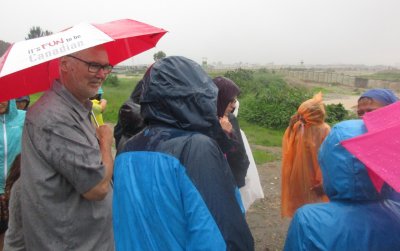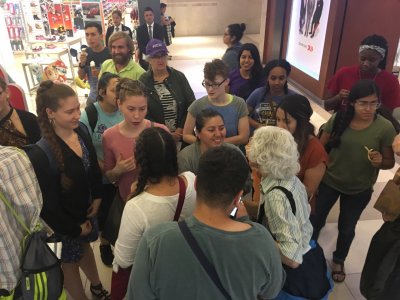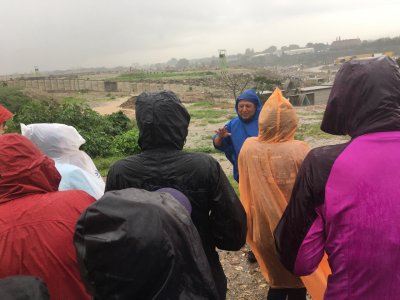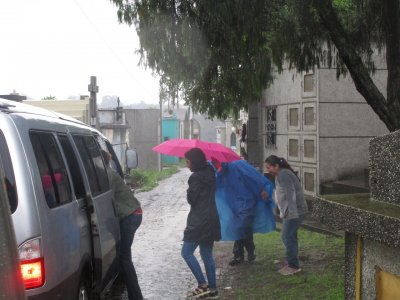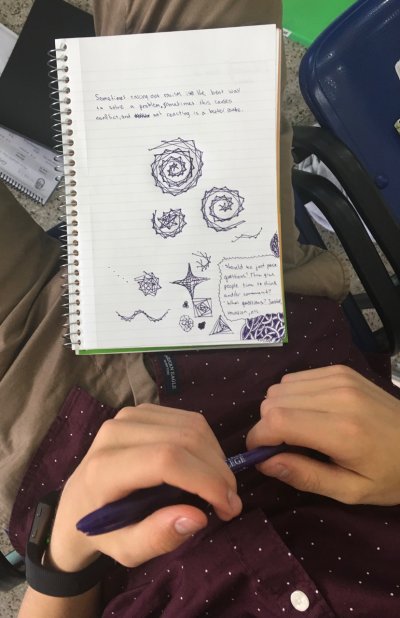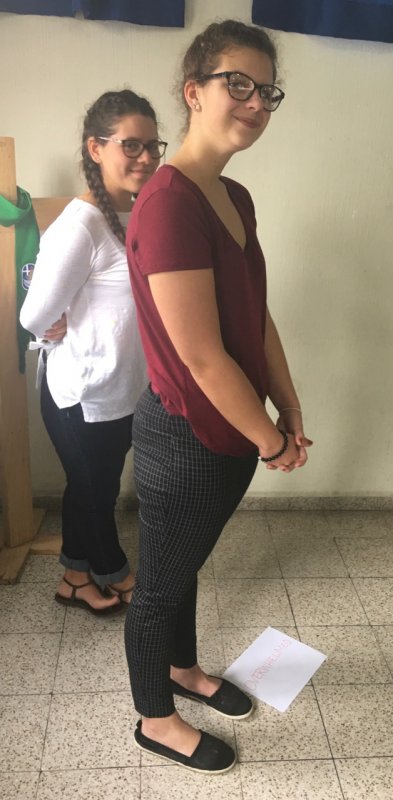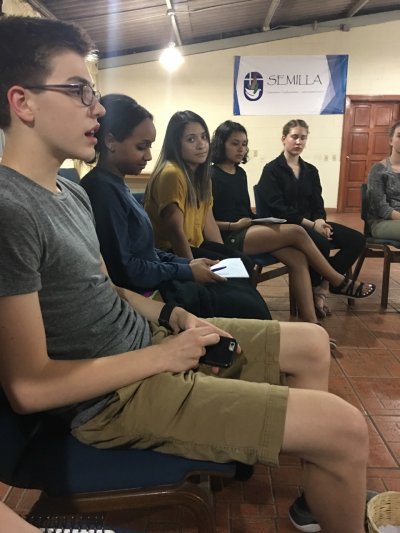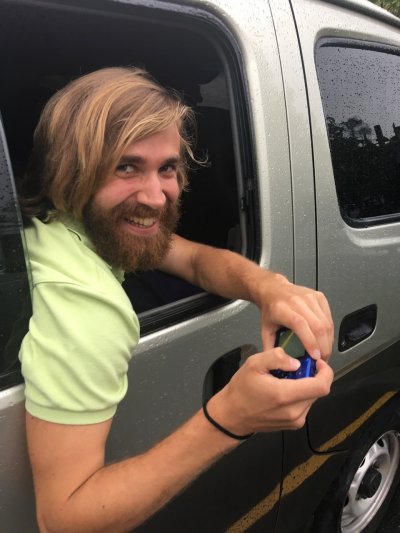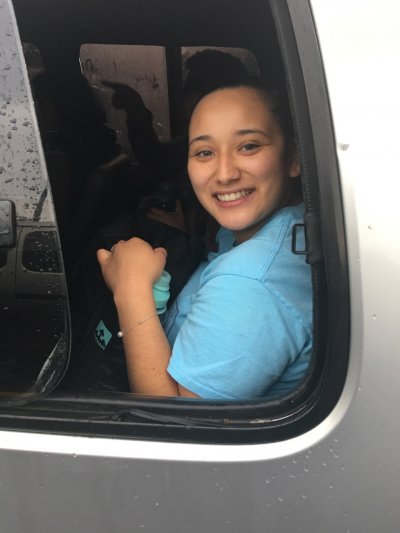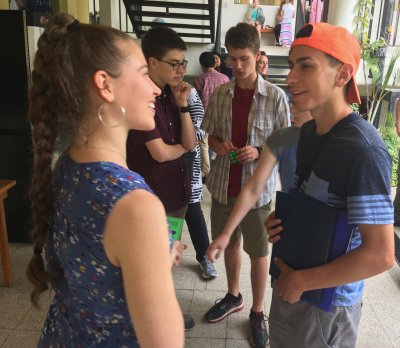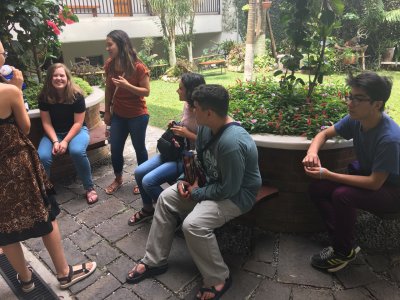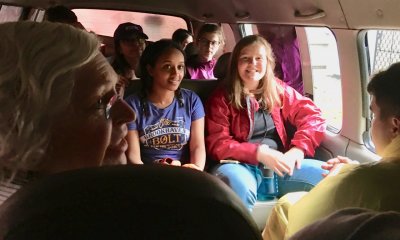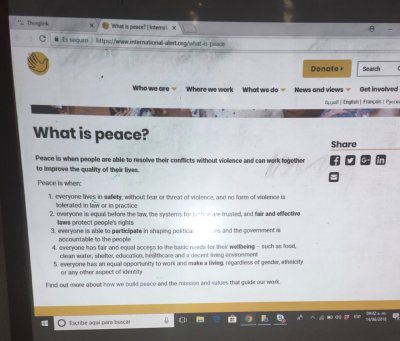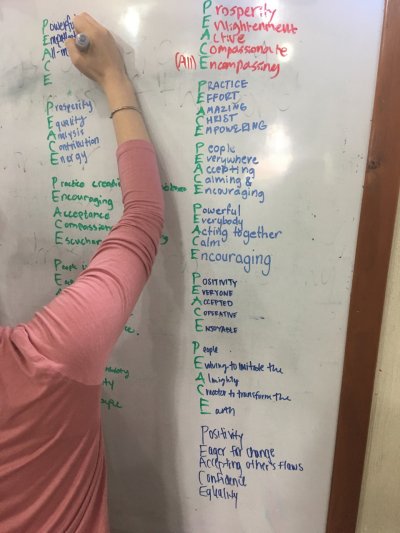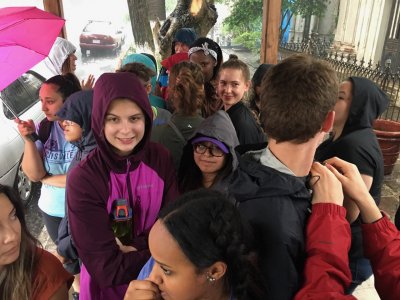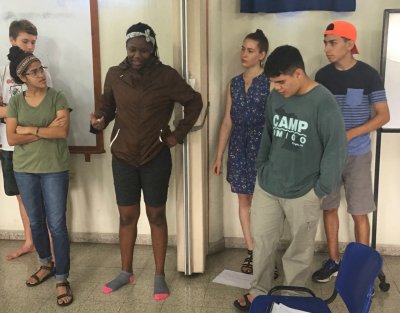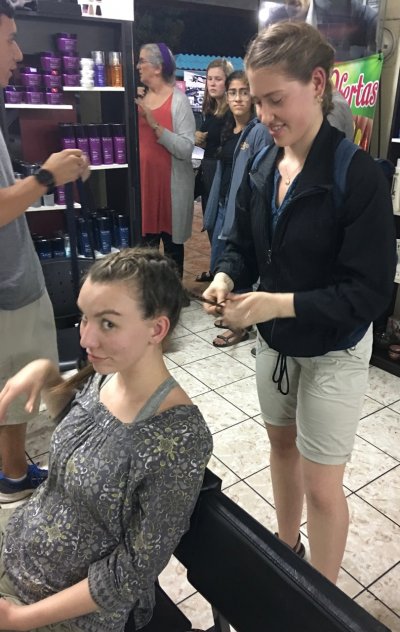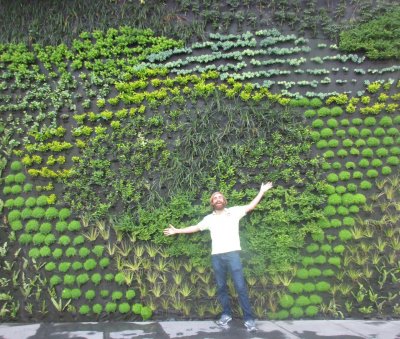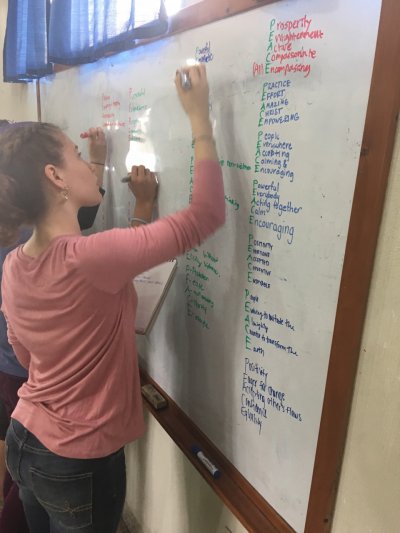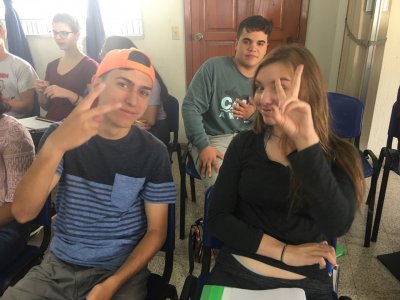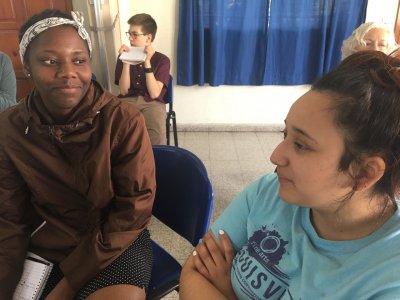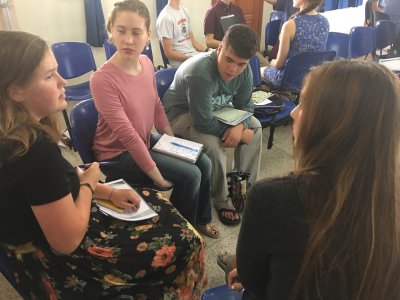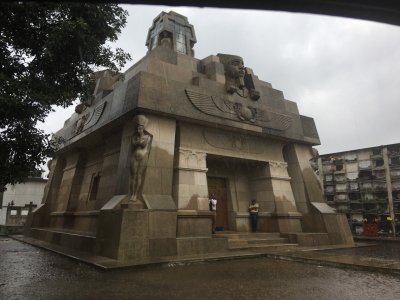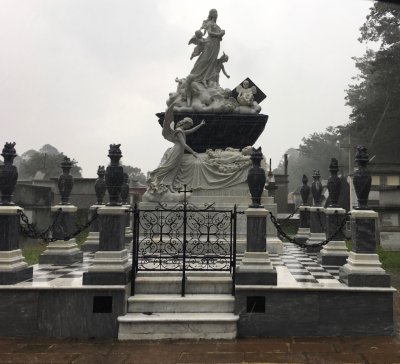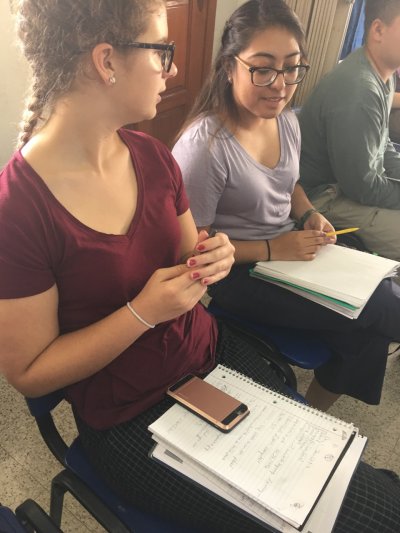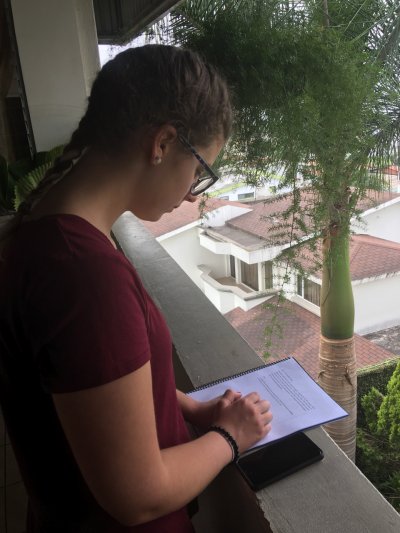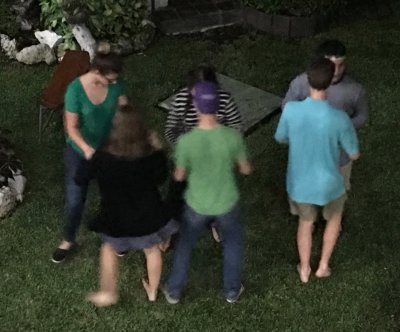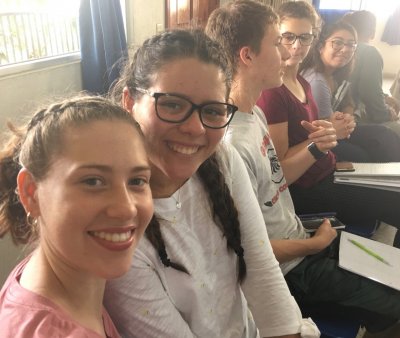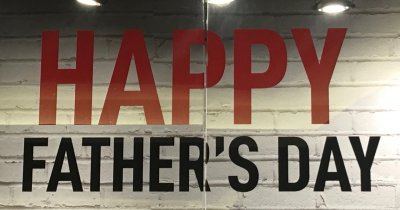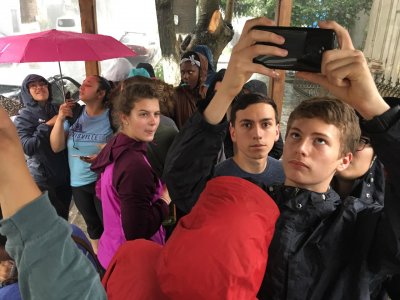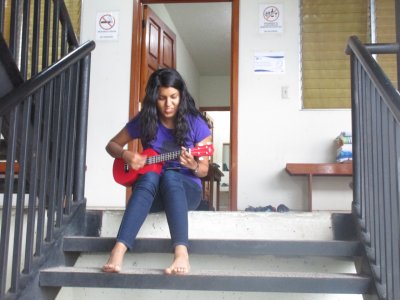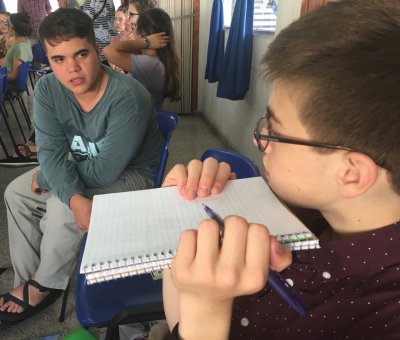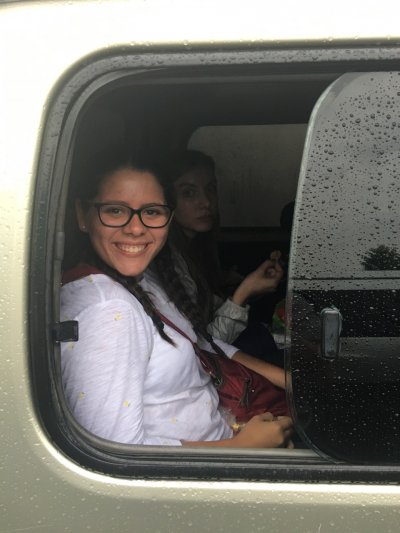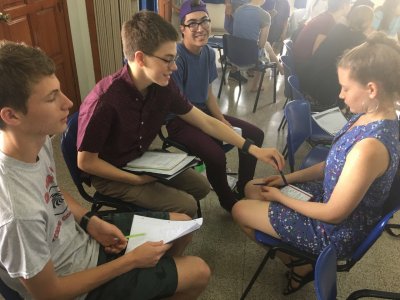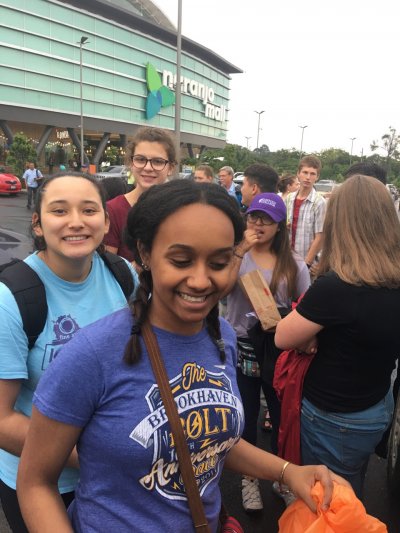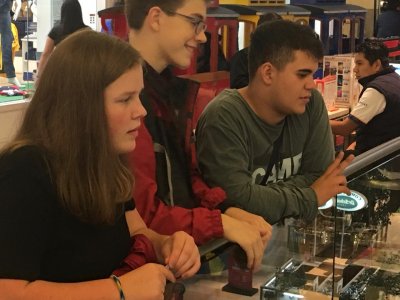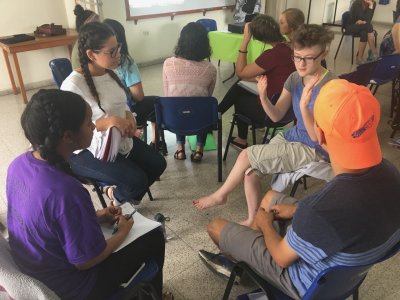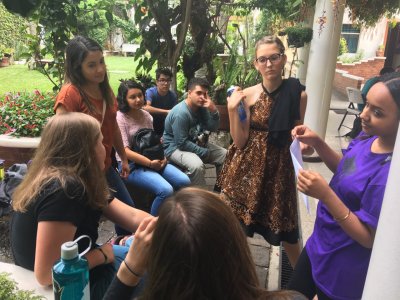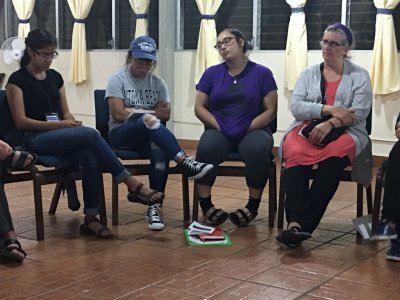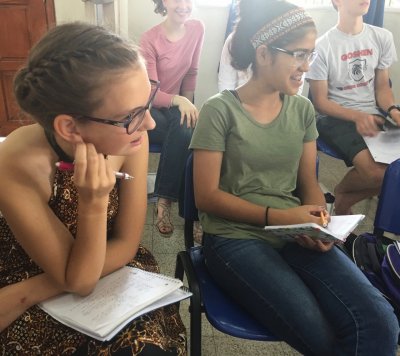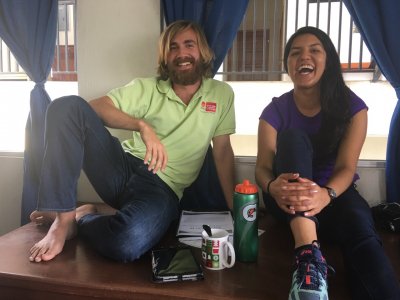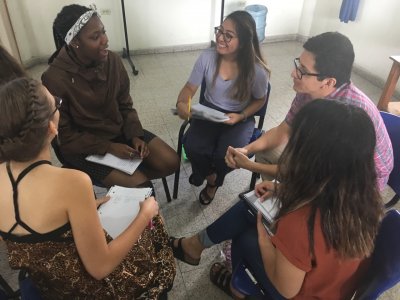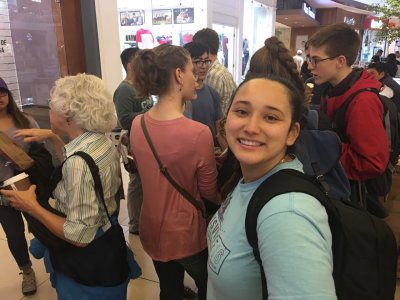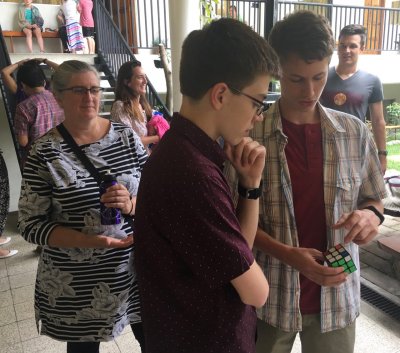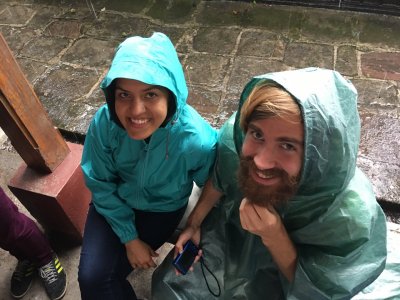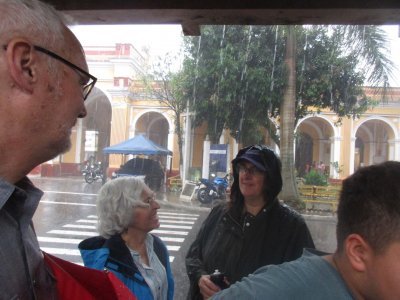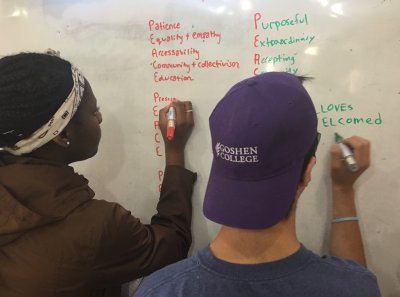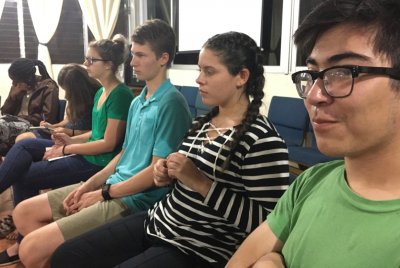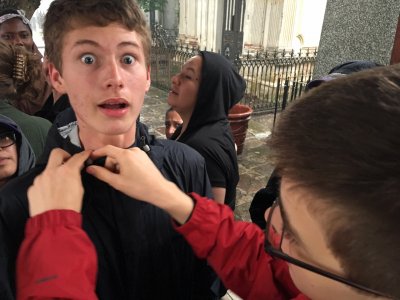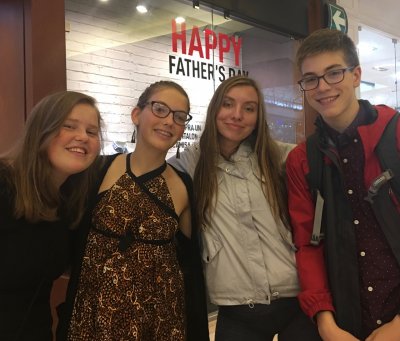Cemetery, City Landfill and Rain Galore
OK, now we believe it’s the rainy season in Guatemala. The seasonal rains arrived just in time for our afternoon field trip, all of which was scheduled to be outside at several different sites. But the rain came in buckets, a true deluge, and it’s still raining now, some five hours later.
That reshaped our afternoon Contrast Tour. We started off the tour at the municipal cemetery, where the contrasts between wealthy and poor, even in death, are obvious. The eight families who own most of the land and businesses in Guatemala have majestic, magnificent, sometimes pyramid-like mausoleums, while others are shoved into stacked spaces in a concrete wall — and removed and reburied elsewhere if their families stop paying their annual rent. Although it was too wet to walk around the cemetery, we took our two vans around to several key sites and heard about the cemetery.
We then walked — soaking wet — out toward the precipice where we could see the city’s landfill, where a third of Guatemala’s garbage goes. Some families have been living in the landfill for three generations, wading through tons of garbage each day to find recyclables that they can then sell, and searching for disposed-of food for their families to eat. Before going to the landfill, we watched the film “A Recycled Life,” which chronicles the stories of some of the longterm landfill families.
From the landfill we had intended to go to Cayala Mall, an outdoor walking mall built somewhat like a colonial town. Because of the rain, we switched to going to the Naranjo Mall, where students were each given 10 quetzales (the daily wage of about a quarter of Guatemalans, about $1.50) to see what they could purchase with that amount. They also searched out an “outfit,” and realized a person making that minimal wage would have to work 30 to 50 days to get a pair of pants and shirt/blouse.
This morning we had two sessions with Israel Ortiz, who is leading us through a study of “Youth and the Fullness of Humanity.” Today’s focus was on peace, with lots of opportunities for smaller-group discussions and reflection on what it means to be people of peace. Several students gave permission to quote portions of their journals from yesterday’s input. Izzy said, “In general I feel like these sessions with Israel are helping me grow strong in my faith, and transforming me into a compassionate peacemaker. I’m learning a lot about different cultures, and how I can grow as a Christian. Israel Ortiz is now a big influence on my faith, and on life as a whole. I truly appreciate his willingness to teach us.” Soraya said: “Israel does a good job of keeping the hard info real and raw while still making me feel hopeful at the end.”
Caro wrote: “Isra says that the world is before us. I wonder how I can process this, taking in mind my faith. There is a hope, and positivity that goes along with this phrase, but I am also reminded of all that is wrong with the world as well as how I contribute to it. How can I live, in the flow of the cyclical processes of my suffering and lament, and appreciating the beauty and simplicity of ephemeral things, in the world before me as a follower of Jesus?” Sofia (Caro’s twin) said: “Isra read us a sobering quote by Henri Nouwen about revolution that I found inspiring. It states that Jesus’ appearance in our midst has made it clear that ‘changing the human heart and changing human society are not separate tasks, but are as interconnected as the two beams of the cross.’ We are called to address injustice in the world through the lens of our faith, whether it be in the form of micro or macro action. The distinction lies in that micro levels of justice address the symptoms of wider issues while macro levels work to deconstruct the root cause of them.”
Another good and provocative day in Guatemala.
Tomorrow we leave for our first overnight trip, departing campus at 6 a.m. We will see an ancient Mayan archaeological site and then journey to several towns around Lago Atitlan, staying overnight in San Juan. Saturday we will drive to Quetzaltenango (Xela) for another overnight stay, and then we will head on to Chichicastenango to see a Catholic Church and the market. We will be back on campus in Guatemala City. Thanks for joining us on the journey.
